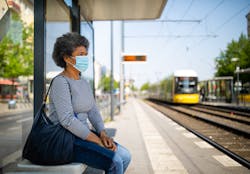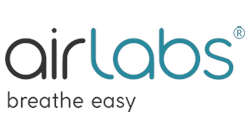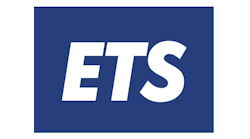It has been one year since State of Emergency orders began rolling out across North America concerning the COVID-19 pandemic. Stay-at-home directives that were originally scheduled to last weeks dragged into months as the global health crisis intensified.
For the transit industry, the losses of the past year can be measured in several ways: Colleagues lost to the pandemic, significant drops in ridership and the near catastrophic reduction in revenues. While harder to measure, the blow to customer confidence, as well as the constant uncertainty, are ongoing challenges that could put recovery plans at risk.
However, the industry is also presented with the opportunity to rethink what mobility can be through better integration of services, data that leads to a deeper understanding of how communities use networks, as well as systems that improve safety.
Strategic Investments
In Turlock, Calif., where Turlock Transit is one of three providers within Stanislaus County, Transit Manager Wayne York’s challenge in dealing with the health crisis during the past year has been compounded by a variety of factors.
“Our biggest challenge has been trying to make strategic investments in technology or equipment to keep staff and passengers safe, while in an environment where (1) regulations and guidance are constantly changing, (2) many emerging technology products are unproven or (3) product availability is limited,” explained York.
The Turlock Transit team met the challenge by turning to extensive research, reviewing products in industry trade publications and networking with peers to identify what worked.
The transit system implemented a range of measures to deliver added safety for its staff and passengers including increased cleaning protocols, limiting the number of passengers on board vehicles to support physical distancing and making personal protective items, such as hand sanitizer and face masks, available if needed.
“As the pandemic progressed and more information was learned about the SARS-CoV-2 virus, we learned that airborne transmission was in fact a significant transmission method, so we began actively seeking an air treatment technology to address that threat,” said York. “It was a priority for us to mitigate or eliminate such threats for the safety of passengers and staff, particularly at focal points like the front of the bus where there can be more person-to-person interactions.”
In February, Turlock Transit became the first transit system in California and the second in the U.S. to install an air filtration device within the driver compartment. The device, called the AirBubbl®, was installed on Turlock Transit’s eight heavy-duty, 35-foot buses and 11 midsize buses. Each device can generate approximately 1,060-cubic feet of clean air each hour, remove more than 95 percent of airborne viruses, bacteria and other particulate matter and gas pollutants including nitrogen dioxide and ozone from the air and can operate for 1,000 hours before filters require replacement by fleet maintenance personnel.
“We sought a product that met three primary goals: (1) proven effective against SARS-CoV-2, and (2) safe for use around drivers and passengers and (3) actively filtered or treated the air (versus passive devices). Most of the products on the market didn’t meet that criteria, so when we learned about how Plymouth Metrolink was using AirBubbl, we recognized that we found a solution that met all of our needs. In addition, it came in an elegant form factor, was relatively inexpensive and made very little noise. Since it has been deployed, it’s been received positively by drivers,” said York.
He explains investing in improved air quality will have positive impacts beyond the current health crisis.
“As a city within the San Joaquin Valley Air Basin, which is a non-attainment area in terms of air quality, we recognized these devices as good long-term investments to remove harmful particulate matter from the air, even after the pandemic has ended,” York said.
Turlock Transit plans for additional technology investments, including whole-bus Active Air Purifications Systems from United Safety and Survivability Corporation. York notes these investments are among ways the transit system can reassure passengers of the steps being taken to keep them safe.
“In the long term, following gradual ridership return and ample opportunities for community-wide vaccinations, I see three key opportunities. The first is to leverage technology to further reduce barriers to access whether in the pre-trip planning phase, on-board the bus or transferring between modes,” said York. “Many of our passengers are socioeconomically disadvantaged and transit-dependent, so it is important we make using transit as simple and easy as possible. Second, I see an opportunity to modify our services to meet the needs of passengers under the ‘new normal,’ which hasn’t yet been fully defined. Third, I see opportunities to coordinate with regional agencies to make intraregional travel more effective, improving mobility for all.”
Safety Drives Decisions
Edmonton Transit Service (ETS) Branch Manager Carrie Hotton-MacDonald says the predominant challenge ETS faced during the past year was making “definitive decisions in an environment that was constantly changing and often ambiguous.” The primary focus, even with so much uncertainty, was the safety of passengers and staff.
ETS, like its peer agencies throughout North America, took on the monumental task of delivering safe and essential service during an unprecedented time. ETS implemented more than 30 different safety measures, including a mask/face covering policy, intensified disinfecting measures of transit vehicles and facilities, armed staff with personal protective equipment, only deployed buses with operator safety shields and developed more contactless sales channels to safely sell transit passes.
“Just about everything has changed in transit,” said Hotton-MacDonald. “Our staff has done an incredible job handling constant changes, new procedures and high levels of stress to keep public transit running in Edmonton. It has been a huge undertaking over the past year and I’m very proud of everyone.”
The constant change also created an environment conducive to innovation and ETS was able to tap some of Edmonton’s homegrown ideas. Hotton-MacDonald points to ETS’ germ-killing push plate pilot at transit centers as one example of this in action.
In early 2021, ETS collaborated with an Edmonton-based biotech company, Outbreaker Solutions, to install push-plates on manual swing doors at some transit centers. The push-plates are made of highly compressed salt. They feel just like a ceramic tile and are safe to touch, as long as you’re not a germ, virus, bacteria or fungi, in which case the salt crystals pierce the cell membrane and neutralize the microbes.
“We’ve had a good relationship with this innovative company for a number of years and when COVID hit, it spurred more detailed conversations about safety products they were working on. They were looking for public spaces to trial their product, and it ended up being a great fit, with great timing,” explained Hotton-MacDonald.
ETS has also begun the installation of new antimicrobial seats on its newer model of trains. The new seats contain an additive that kills germs.
“Safety is at the forefront of just about every decision we’re making right now,” said Hotton-MacDonald. “On that note, we’re also excited about the community collaboration we’ll be doing over the coming months, to gather feedback from diverse groups about how we can further enhance transit safety, especially for women and girls. We firmly believe that a transit system that is safe for women and girls is safe for everyone. We’re actually one of the few transit agencies in North America to put a gender-based analysis lens (GBA+) on the work we do.”
While the pandemic brought its fair share of challenges, ETS is forging ahead with several modernization projects in 2021, including the launch of a new bus network and On Demand Transit pilot on April 25.
“We’re very excited about the new bus network, as it will provide Edmontonians with faster, more direct and better-connected transit service. The new bus network is based on feedback we’ve heard from tens of thousands of Edmontonians. It will be their network, and it will help recover ridership in time, as vaccine rollout progresses of course,” said Hotton-MacDonald.
She continued, “Like many transit agencies, ETS ridership levels have decreased during COVID-19. Our levels have stabilized around 40 percent of pre-COVID levels. It was initially anticipated that the new bus network and On Demand Transit would increase ridership levels, as has been the case in several other cities that made similar changes. However, these projects are now part of the ridership recovery plan for ETS. We’re confident that ridership will recover over time, as vaccines progress, and more employees and students gradually start returning to the office and campus.”
Developing a Plan
Recovery within the transit industry may arrive through non-traditional routes, take several years to fully be realized and will require partnerships and collaboration throughout the industry as it moves toward a strategic recovery.
Recovery – whatever it may look like – will require a plan. One example of this in action is from the Los Angeles County Metropolitan Transportation Authority (L.A. Metro), which released its “A Path Forward” report developed over the past year by the authority’s Recovery Task Force.
The plan contains 20 early action recommendations and 17 final recommendations that will serve as “a partial roadmap for building” a system that is “more effective, equitable and sustainable.” The task force notes in the report that the recommendations reflect a "mix of pragmatism and optimism.”
“Now more than ever we believe in the promise of a more equitable L.A. that doesn’t require every adult to own a car, where all people have a multitude of mobility options that are convenient and accessible, and where it is safe and healthy to live your life in public spaces no matter your race or economic status. The recommendations in this report from the Recovery Task Force offer such a promise,” wrote L.A. Metro CEO Phil Washington in the report’s opening letter.
The 17 final recommendations within the recovery plan include new and improved services such as express buses, accelerating complete streets, improving station amenities, offering incentives to choose transit and working to integrate transit in the Los Angeles Region.
L.A. Metro also aims to become a more responsive agency by gathering and sharing more data, as well as improving public engagement.
The authority wants to plan for what it labels a “vibrant future” through transit-oriented communities, expanded broadband infrastructure in the region, the creation of green jobs and green infrastructure and reimagining destination discounts, which aim to support local small business by promoting the use of transit to access these destinations.
Last, L.A. Metro recognizes it will need to develop a plan for how to pay for the recommendations through controlling construction costs and expanding revenue opportunities.
The report lays out implementation steps for each recommendation and L.A. Metro explained staff will aim to develop, track and share metrics as the authority moves forward with the recovery plan. The full report can be accessed at metro.net/recovery.

Mischa Wanek-Libman | Group Editorial Director
Mischa Wanek-Libman is director of communications with Transdev North America. She has more than 20 years of experience working in the transportation industry covering construction projects, engineering challenges, transit and rail operations and best practices.
Wanek-Libman has held top editorial positions at freight rail and public transportation business-to-business publications including as editor-in-chief and editorial director of Mass Transit from 2018-2024. She has been recognized for editorial excellence through her individual work, as well as for collaborative content.
She is an active member of the American Public Transportation Association's Marketing and Communications Committee and served 14 years as a Board Observer on the National Railroad Construction and Maintenance Association (NRC) Board of Directors.
She is a graduate of Drake University in Des Moines, Iowa, where she earned a Bachelor of Arts degree in Journalism and Mass Communication.






